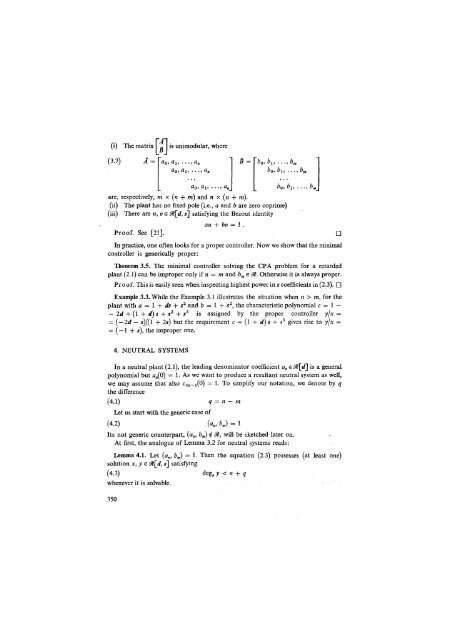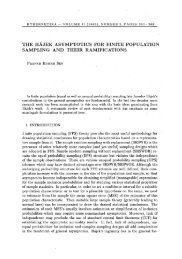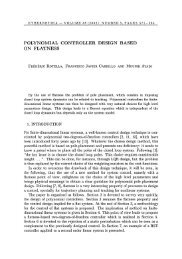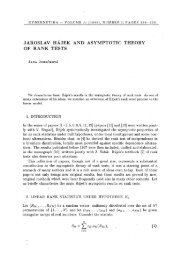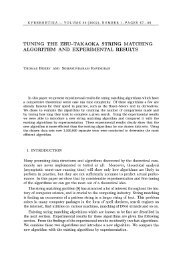characteristic polynomial assignment for delay ... - Kybernetika
characteristic polynomial assignment for delay ... - Kybernetika
characteristic polynomial assignment for delay ... - Kybernetika
Create successful ePaper yourself
Turn your PDF publications into a flip-book with our unique Google optimized e-Paper software.
(i) The matrix g is unimodular, where<br />
(3.7) = | a 0<br />
,a u<br />
...,a n<br />
a 0<br />
,a u<br />
...,a n<br />
b 0<br />
, Ь u<br />
..., b m<br />
b 0<br />
, b u<br />
..., b„<br />
b 0<br />
, b u<br />
..., b„<br />
are, respectively, m x (n + m) and n x (n + m).<br />
(ii) The plant has no fixed pole (i.e., a and b are zero coprime)<br />
(iii) There are u,ve 0t\d, s] satisfying the Bezout identity<br />
au + bv = 1 .<br />
Proof. See [21].<br />
•<br />
In practice, one often looks <strong>for</strong> a proper controller. Now we show that the minimal<br />
controller is generically proper:<br />
Theorem 3.5. The minimal controller solving the CPA problem <strong>for</strong> a retarded<br />
plant (2.1) can be improper only if n = m and b m<br />
e 01. Otherwise it is always proper.<br />
Proof. This is easily seen when inspecting highest power in s coefficients in (2.3). •<br />
Example 3.3. While the Example 3.1 illustrates the situation when n > m, <strong>for</strong> the<br />
plant with a = 1 + ds + s 2 and b = 1 + s 2 , the <strong>characteristic</strong> <strong>polynomial</strong> c = 1 -<br />
- 2d + (1 + d) s + s 2 + s 3 is assigned by the proper controller yjx =<br />
= ( — 2d — s)l(l + 2s) but the requirement c = (1 + d) s + s 3 gives' rise to yjx =<br />
= (— 1 + s), the improper one.<br />
4. NEUTRAL SYSTEMS<br />
In a neutral plant (2.1), the leading denominator coefficient a n<br />
e $[d~\ is a general<br />
<strong>polynomial</strong> but a„(0) = 1. As we want to produce a resultant neutral system as well,<br />
we may assume that also c 2n<br />
-i(0) = 1. To simplify our notation, we denote by q<br />
the difference<br />
(4.1) q = n - m<br />
Let us start with the generic case of<br />
(4.2) (a„, b m<br />
) = 1<br />
Its not generic counterpart, (a„, b m<br />
) $ 01, will be sketched later on.<br />
At first, the analogue of Lemma 3.2 <strong>for</strong> neutral systems reads:<br />
Lemma 4.1. Let (a n<br />
, b m<br />
) = 1. Then the equation (2.3) possesses (at least one)<br />
solution x, y e M[d, s] satisfying<br />
(4.3) deg s<br />
v < n + q<br />
whenever it is solvable.<br />
350


